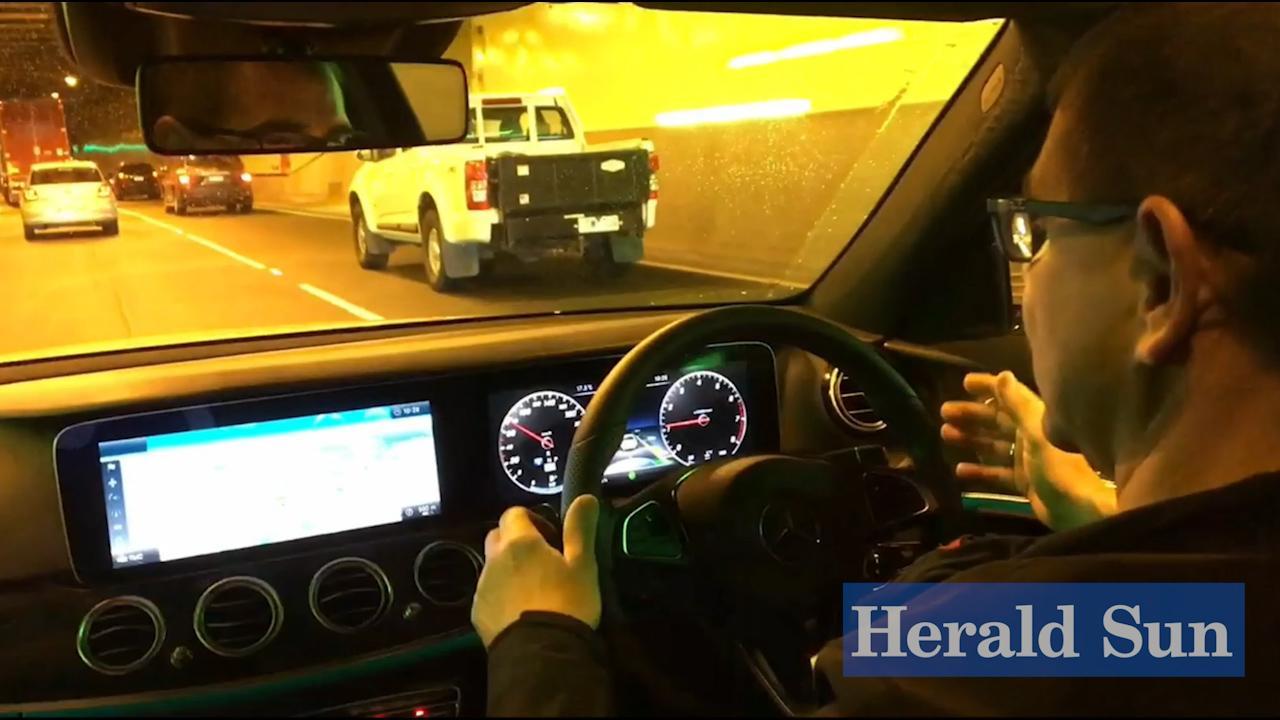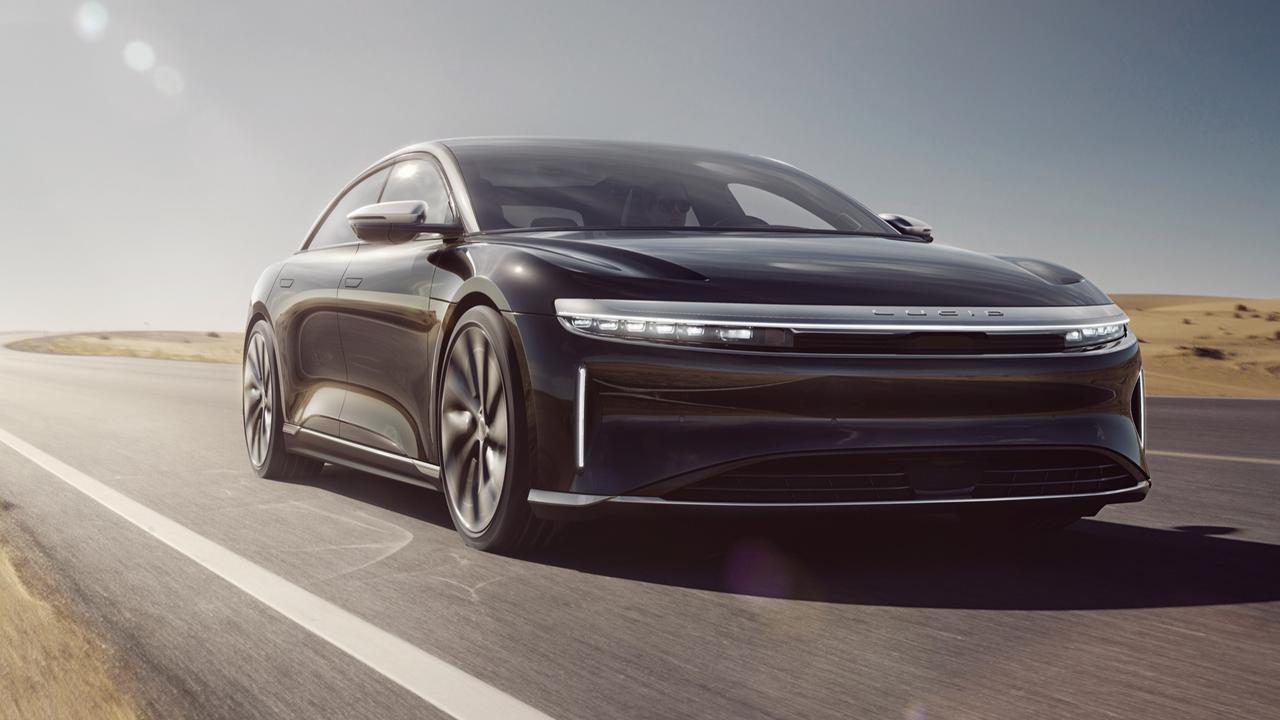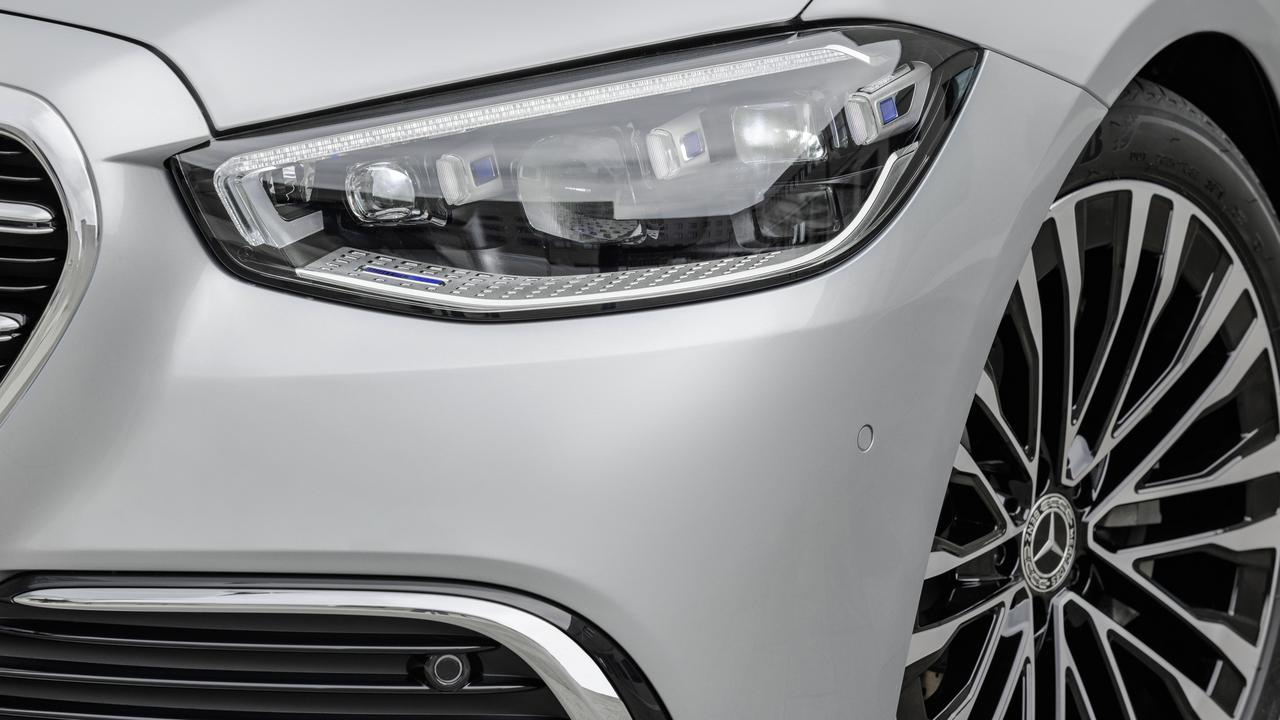New Ford Focus can ‘see’ around corners before it gets to them
WORLD-FIRST technology is coming to the new Ford Focus hatchback, with semi-autonomous driving aids that were once exclusive to luxury cars.

FORD has unveiled a small car that can see around corners at night — even before it gets to them.
Unlike other cars that rely on steering to change the beam of the headlights, the world first technology on the new Ford Focus uses cameras in the windscreen to scan the road ahead to detect corners and roundabouts that are up to 65 metres away.
At night the car will automatically adjust the headlights to give drivers better visibility in turns without dazzling oncoming traffic.
Ford says the camera uses lane markings and roads signs to “pre-adjust headlamp patterns for improved visibility by monitoring bends in the road and — for the first time in the industry — road signs”.

The technology does not end there.
The new Focus — which is due in Australia showrooms in late 2018 and will revert to being sourced from Germany rather than Thailand — will also prevent drivers from accidentally driving the wrong way on a freeway.
The system called “Wrong Way Alert” uses a windscreen mounted camera and information from the car’s navigation to provide drivers with “audible and visual warnings when driving through two ‘No Entry’ signs on a motorway ramp”.
The technology will first be available for customers in Germany, Austria and Switzerland but other countries are set to follow.
In automatic models the humble gear shift lever has been replaced by a rotary dial, similar to that found in the latest Jaguars and Land Rovers.

The new Focus will also have improved “lane centring technology” when the car is driven in a semi-autonomous mode, with radar cruise control.
Top end versions of the new Focus will also be able to handle the daily grind without the driver needing to touch the brake or accelerator pedals.
Ford says the latest generation of its “stop and go” tech will bring the Focus to a complete stop in stop-start traffic — and automatically pull away if stopped for less than three seconds. If stopped longer than this, the driver can push a button on the steering wheel button or gently apply the accelerator to pull away.
In Europe the new Focus will be available with speed sign recognition technology — which detects signs rather than relying solely on navigation data, which can become quickly out of date and does not account for road works zones — but this system is yet to be confirmed for Australia.

Ford is also claiming another first for the Focus: “glare-free” high beam that “removes the guilt of accidentally dazzling other drivers and helps users see more of the road ahead at night”.
And the latest generation automatic emergency braking on the new Focus can detect cyclists and pedestrians, as well as stopped traffic.
Final details of the new Ford Focus line-up won’t be revealed until closer to the car’s on-sale date in November 2018.

While there are a range of new engines available in Europe, Australia-bound models are set for a big change under the bonnet, with four-cylinder engines being replaced by a choice of two three-cylinders.
The cheapest models will come with a non-turbo 1.5-litre three-cylinder petrol engine matched to a six-speed auto, while dearer models will come with a turbocharged 1.5-litre three-cylinder petrol engine matched to an eight-speed auto.

Ford also unveiled this week a sporty version of the new Focus called the “ST-Line” but exact details on the successor to its “ST” hot hatch variant are not due to be released until later in the year and that model not due to arrive in showrooms until at least 12 months after the mainstream Focus range.
In Europe, Ford will sell an off-road style version of the Focus designed to compete with the Subaru XV, although it has not been confirmed for Australia.
This reporter is on Twitter: @JoshuaDowling



